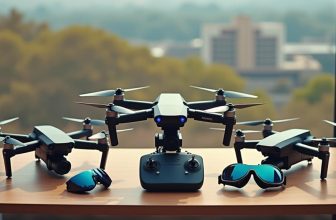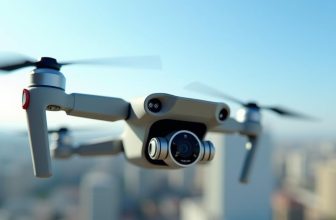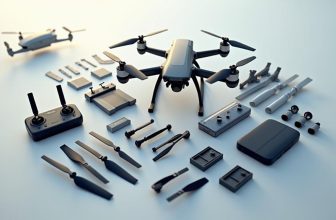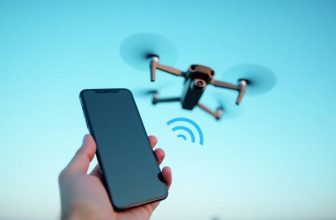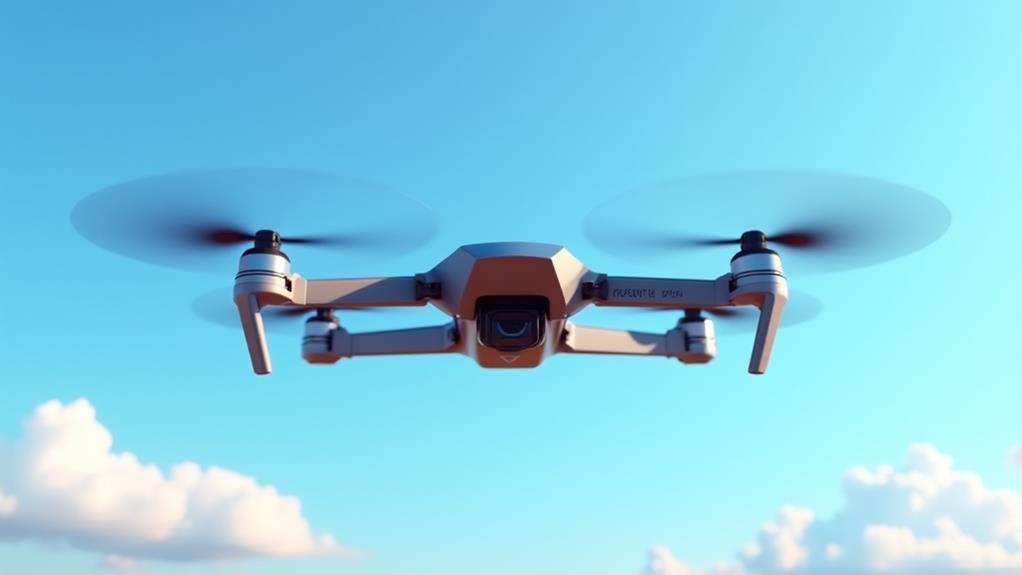
As you gaze out at the open horizon, the sky is no longer the limit – it’s just the beginning of a new frontier, where gas powered drones are set to take flight in 2024. You’re likely familiar with the limitations of traditional drones, from limited flight times to restricted payloads. But what if you could harness the power of a gasoline engine to open up a whole new world of possibilities? With advancements in engine design and fuel management on the horizon, the potential for gas powered drones is vast – but how will they change the game for industries like logistics, construction, and agriculture?
Contents
Key Takeaways
- Gas powered drones in 2024 offer extended flight times and heavier payloads, ideal for search and rescue, logistics, and industrial applications.
- Advancements in engine design and fuel management systems have enhanced energy efficiency and reduced emissions in 2024 gas powered drones.
- Stricter emissions standards and noise regulations are expected to drive innovation in the gas powered drone industry in 2024.
- Research is ongoing to develop alternative fuels and hybrid powertrains, reducing the carbon footprint of gas powered drones in 2024.
- Market trends in 2024 are shifting towards sustainable and environmentally friendly gas powered drone solutions, driving the need for innovation and adaptation.
Benefits of Gas Powered Drones
When considering gas powered drones, you’re likely to notice a significant increase in flight duration and range capabilities compared to their electric counterparts.
This is primarily due to the higher energy density of gas, which enables drones to carry more fuel and operate for longer periods. As a result, you can expect to achieve longer flight times, often exceeding several hours, and cover greater distances.
Another benefit of gas powered drones is their fuel efficiency. Although they consume more fuel than electric drones, the overall efficiency of a gas engine can lead to cost savings in the long run.
By reducing the need for frequent battery replacements and minimizing downtime, you can optimize your operations and lower maintenance costs. Additionally, gas powered drones can be more cost-effective for large-scale applications, where the cost of battery replacements would be prohibitively expensive.
With improved fuel efficiency and cost savings, gas powered drones are an attractive option for users who require extended flight capabilities and reduced operational costs.
Key Industries and Applications
As you explore the capabilities of gas powered drones, it becomes clear that they’ve a broad range of applications across various industries.
In the domain of search and rescue, gas powered drones offer extended flight times, allowing them to cover larger areas and locate missing people more efficiently.
Their ability to carry heavier payloads also enables them to transport essential supplies, such as first aid kits and communication devices, to stranded individuals.
In the logistics sector, gas powered drones are being utilized for cargo delivery, particularly in remote or hard-to-reach areas.
They can transport goods, such as medical supplies, food, and equipment, to areas inaccessible by traditional means.
Additionally, gas powered drones are being used in the construction, mining, and agriculture industries for tasks like surveying, mapping, and inspection.
Their increased flight times and payloads enable them to gather more accurate data and conduct more thorough inspections, leading to improved decision-making and increased productivity.
Advancements in Technology
The emergence of new technologies has profoundly impacted the development of gas powered drones, enhancing their performance, efficiency, and overall capabilities.
As you explore the advancements in gas powered drone technology, you’ll notice significant improvements in energy efficiency. Manufacturers have optimized engine designs, reduced weight, and implemented more efficient fuel management systems, resulting in longer flight times and increased productivity.
These advancements also have a positive impact on the environmental footprint of gas powered drones. By reducing fuel consumption, you lower the emissions and minimize the environmental impact.
Additionally, researchers are exploring alternative fuels and hybrid powertrains, which could further decrease the carbon footprint of gas powered drones.
When evaluating the latest gas powered drone models, you should consider the technological advancements that enhance energy efficiency and reduce environmental impact.
Look for features such as optimized engine management, advanced fuel injection systems, and lightweight materials.
Operating Gas Powered Drones
Operating a gas powered drone requires a deep understanding of its mechanics, as well as adherence to safety protocols and guidelines.
As you prepare to operate a gas powered drone, it is vital to undergo thorough Pilot Training that covers the drone’s systems, performance characteristics, and emergency procedures.
This training will help you develop the skills and knowledge necessary to operate the drone safely and efficiently.
In addition to Pilot Training, you must also familiarize yourself with Safety Regulations governing the operation of gas powered drones.
These regulations typically include requirements for drone registration, pilot certification, and operation in controlled airspace.
You must also verify that you comply with local regulations and guidelines, such as those related to noise pollution and environmental impact.
When operating a gas powered drone, you’ll need to monitor its performance closely, paying attention to factors such as engine temperature, fuel level, and system status.
Regular maintenance is also pivotal to guarantee the drone remains airworthy and operates safely.
Future of Gas Powered Drones
You’ve mastered the operation of gas powered drones, and now you’re ready to explore the next chapter in their evolution.
As you look to the future, vital to weigh market trends and how they’ll impact the development of gas powered drones.
Currently, the market is shifting towards more sustainable and environmentally friendly solutions.
This shift is driven by increasing concerns about the environmental impact of gas powered drones, including noise pollution, air emissions, and fuel consumption.
You can expect to see the development of more efficient engines, alternative fuels, and hybrid models that combine gas power with electric or solar power.
These advancements will help reduce the environmental impact of gas powered drones while maintaining their performance and range.
Additionally, regulatory bodies are likely to implement stricter emissions standards and noise regulations, further driving innovation in the industry.
As you ponder your next steps, paramount to stay informed about these market trends and be prepared to adapt to the changing landscape of gas powered drones.
FAQs: Gas Powered Drones
How Are Gas-Powered Drones Environmentally Friendly?
You might think gas-powered drones are counterintuitive to environmental friendliness, but they can offer fuel efficiency and emission reduction compared to traditional methods, as more efficient engines and optimized systems minimize their ecological footprint effectively.
What Safety Gear Is Required for Operators?
When operating any heavy machinery, you’ll need safety gear, including eye protection such as goggles or safety glasses. Additionally, you’ll require a helmet that meets the specific helmet requirements of your region and operation type.
Can Gas-Powered Drones Operate in Cold Weather?
You might assume cold weather severely hampers all drone operations, but that’s partially true. In reality, cold limitations mainly affect fuel efficiency, which can decrease by up to 30% in freezing temperatures, impacting overall performance.
How Do Gas-Powered Drones Handle High Altitudes?
When operating at high altitudes, you’ll face decreased air resistance and increased turbulence. You’ll need to implement turbulence mitigation strategies, such as adjusting flight controls and leveraging wind-resistance design features, to guarantee stable flight.
Are Gas-Powered Drones Suitable for Indoor Use?
You coincidentally consider using drones indoors, but are gas-powered ones suitable? Not quite, as they pose Indoor safety risks and face Airflow limitations, making them less efficient and more hazardous in confined spaces.
Conclusion
As you imagine the future of gas powered drones, picture a high-performance sports car on the highway – powerful, efficient, and built for speed. Just as a finely-tuned engine can propel a car to new heights, advancements in gas powered drones will revolutionize industries like logistics and construction. With their unparalleled flight times and payloads, these drones will be the “turbocharged” workhorses of the sky, propelling businesses forward with increased productivity and cost savings.



